Today’s ambitious businesses are wising up to the power of a global workforce. Not only does it reduce overhead costs for your business, but it also opens you up to a much larger talent pool of professionals worldwide.
In North America alone, around 25 percent of professional jobs are currently remote work opportunities, and this figure is expected to continue to grow throughout 2023.
For HR directors, this presents a unique challenge: How do you make sure you’re making the right hires? How do you go about planning your global workforce management? And how can you be sure your onboarding program is helping new joiners enjoy a smooth transition that boosts their ultimate effectiveness?
The stakes are high. Recruitment is an expensive business; according to the Society for Human Resource Management (SHRM), it costs nearly $4,700 to make the average hire. While onboarding programs last 90 days on average, it typically takes as long as 12 months for people to reach their full potential at work. That means the real cost of recruitment can be as much as three or four times their salary.
According to Gallup, people who have a positive onboarding experience are almost three times as likely to feel prepared and supported in their role. This boosts their confidence, their productivity, and their ability to seamlessly become a member of the team.
With traditional onboarding programs built around a physical office, how can you build a strategy that works effectively for remote workers? Let’s dive into some of our finest remote onboarding tips.

What is onboarding and why is it important?
SHRM defines onboarding as “integrating a new employee with a company and its culture, as well as getting a new hire the tools and information needed to become a productive member of the team.”
Onboarding is a comprehensive, strategic process that starts as soon as an offer is made to the job seeker and should continue throughout their first year of employment. A positive onboarding experience reassures people that they made the right decision in joining the company, and motivates them for future success.
Put simply, having a structured onboarding process is good business practice. It improves productivity among new joiners and accelerates their connection with their team. There’s a clear connection between effective onboarding and performance at work.
It also reduces anxiety and increases their confidence at work. In the United States, it’s estimated that 26 percent of adults suffer from a diagnosable mental disorder in any given year. Left unchecked, unintentionally poor people management can have a real impact on business. When too few people have too much work, the stress can quickly snowball. People leave without being replaced, customers grow, people take annual leave and sick days, and workloads naturally increase. These gradual changes lead to team members becoming overwhelmed and unable to cope.
The costs of this kind of situation can pile up fast. In the UK, for example, research estimates that poor mental health costs employers £45 billion every year. On the other hand, for every £1 spent on mental health provisions, businesses get back £5 in improved productivity, and reduced absence and staff turnover.
An effective and thorough onboarding plan can mitigate many of these risks.
The challenge: How to successfully onboard remote employees
Although most HR leaders recognize that first impressions and positive onboarding experiences are important to retaining employees, there’s still plenty of room for improvement. Only 12 percent of employees think their company did a great job with their onboarding in the real world.
Equally, Gallup found in 2022 that only 21 percent of employees are engaged at work and only 33 percent reported thriving in their overall wellbeing. Instead, most said that they don’t find their work meaningful; and this kind of low engagement costs the global economy $7.8 trillion a year.
In the world of remote work, it’s much easier for onboarding to go wrong, leaving the new joiner feeling unappreciated and disconnected. Any remote first day will feel particularly frustrating if, for example:
- Their computer doesn’t arrive before their start date.
- Their manager is late to the kick-off videoconference.
- They have to spend several hours on their first day filling out documents—retyping their contact information each time.
In the office, it’s much easier for a co-worker or manager to pick up on social cues and make a real impression on a new joiner. It’s also easier to spot things they’re struggling with, or any frustrations they might be experiencing. In a remote setting, little problems can grow undetected. That means that a formal, high-quality onboarding process is all the more critical.
The solution: The new world of remote onboarding
As a result, remote onboarding must go to even greater lengths to be creative, transparent, and efficient to inspire new hires. It must connect them with the company culture and other workers—without the benefit of real-world company events or impromptu conversations at the water cooler.
Additionally, it must tackle the unique needs of remote workers. Team members will need equipment to be shipped to their homes, and will possibly even have a guided setup session with someone from the IT department. They also may need help setting up their office, or a 101 primer to help them be truly productive in their own space. Bringing them into regular team meetings and onboarding them onto your instant communication tools will also give them easy access to others, to ask questions and build connections.

Key elements of successful remote onboarding
Successful remote onboarding should include logistical preparations that enable the new joiner to begin work on the first day. It should also educate the new hire about the company’s culture and create a sense of transparency and camaraderie.
The remote onboarding process can be separated into a series of phases. These reflect the changing needs of the new hire throughout their first year of employment. Each phase has its own goals supporting the development of the new hire and preparing them for the next step of their onboarding process.
While not exhaustive, these example checklists represent remote onboarding best practices, and should be used as a guide when planning your own strategy. Combine these with our easy-to-use templates to create the optimum remote onboarding experience.
Preboarding
The preboarding period is used to reinforce the new hire’s decision to join the company and reduce apprehension regarding their new job. This period will also be used to set up the remote office and minimize the logistical bureaucracy of the first day.
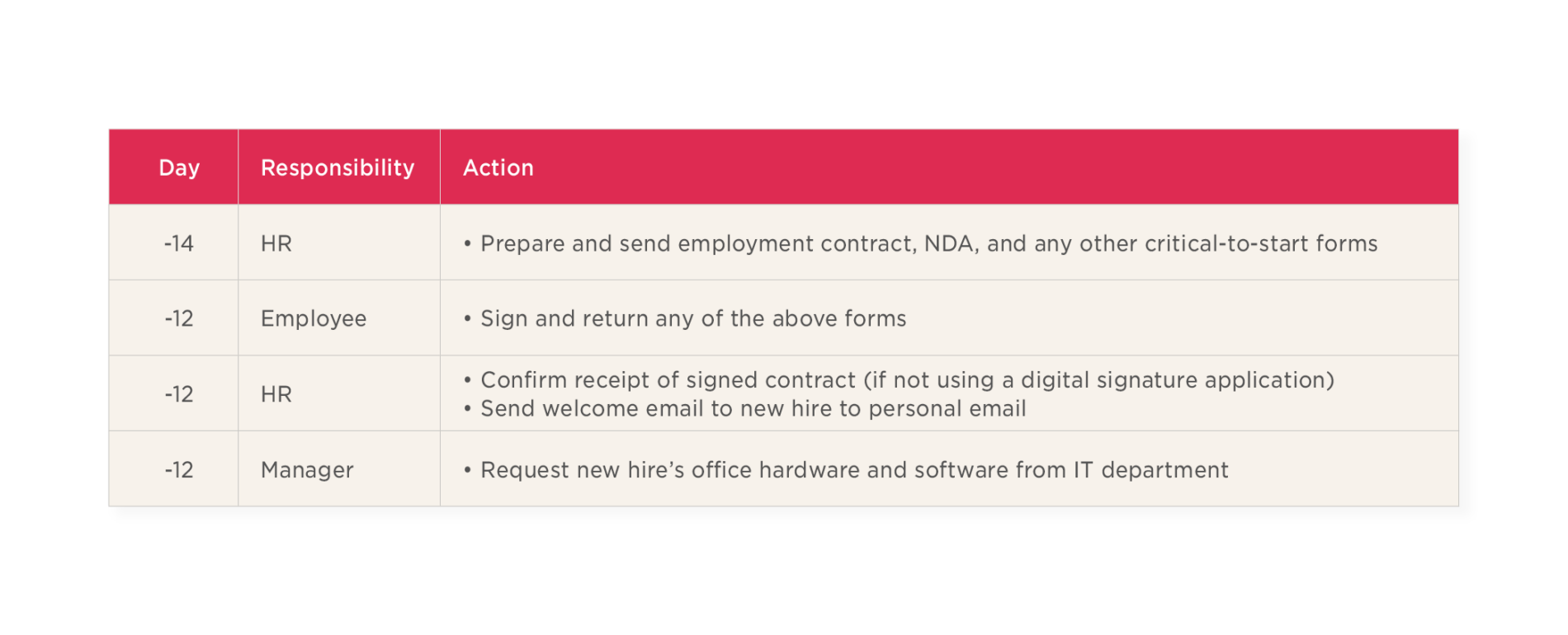
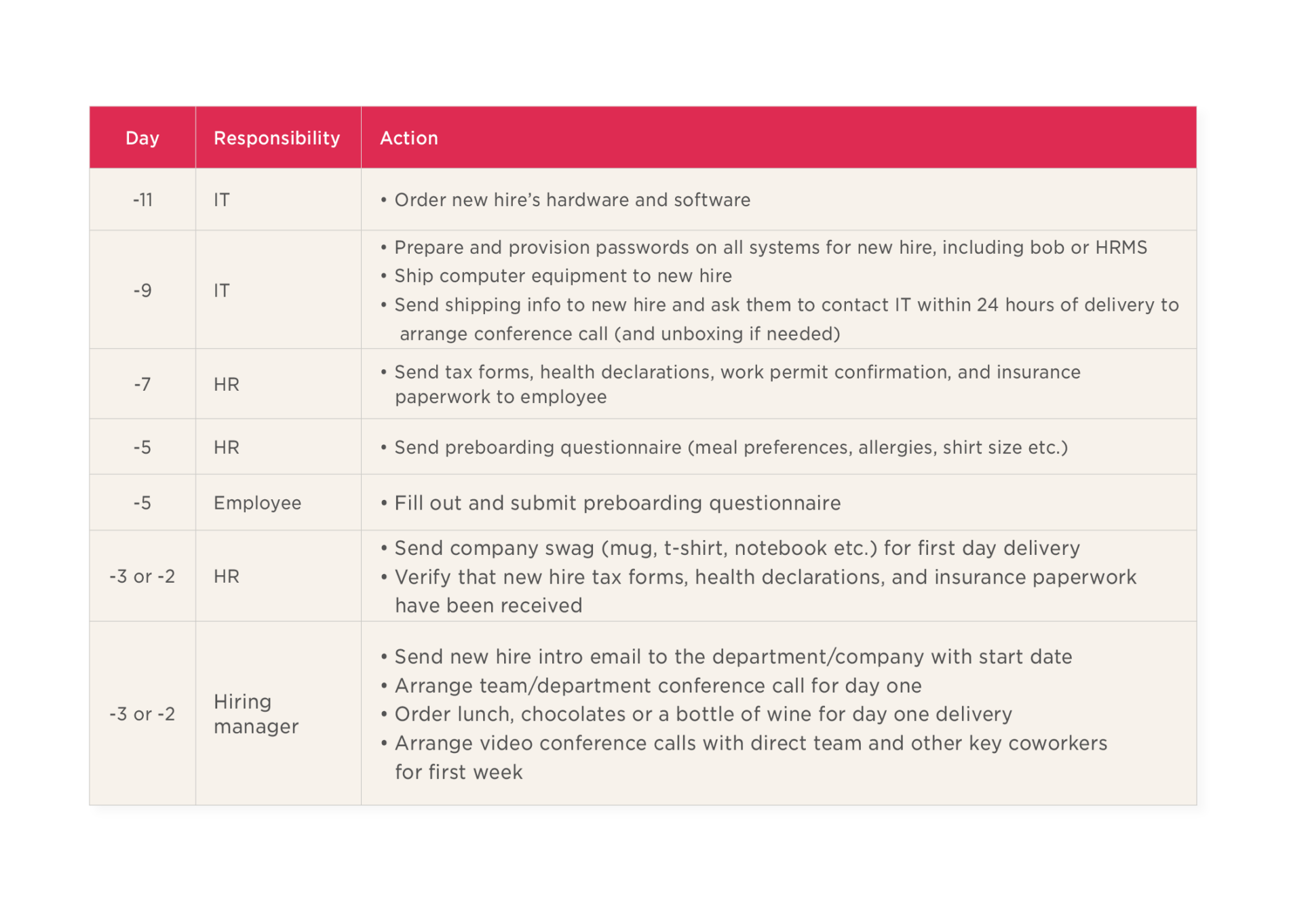
Days 1-30
This period is designed to make the new hire’s first day a positive, productive experience, and to begin to connect them to the company culture. Managers will begin to set goals with them, and they’ll start becoming productive.
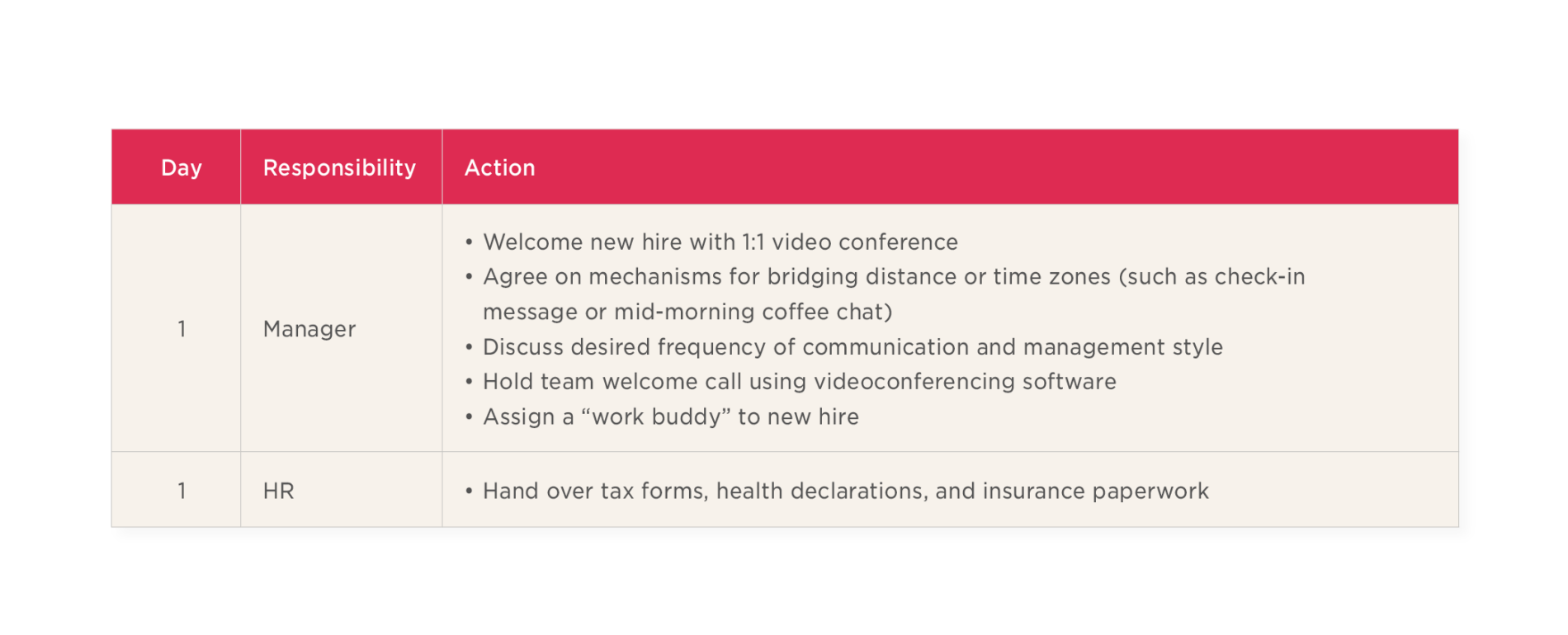
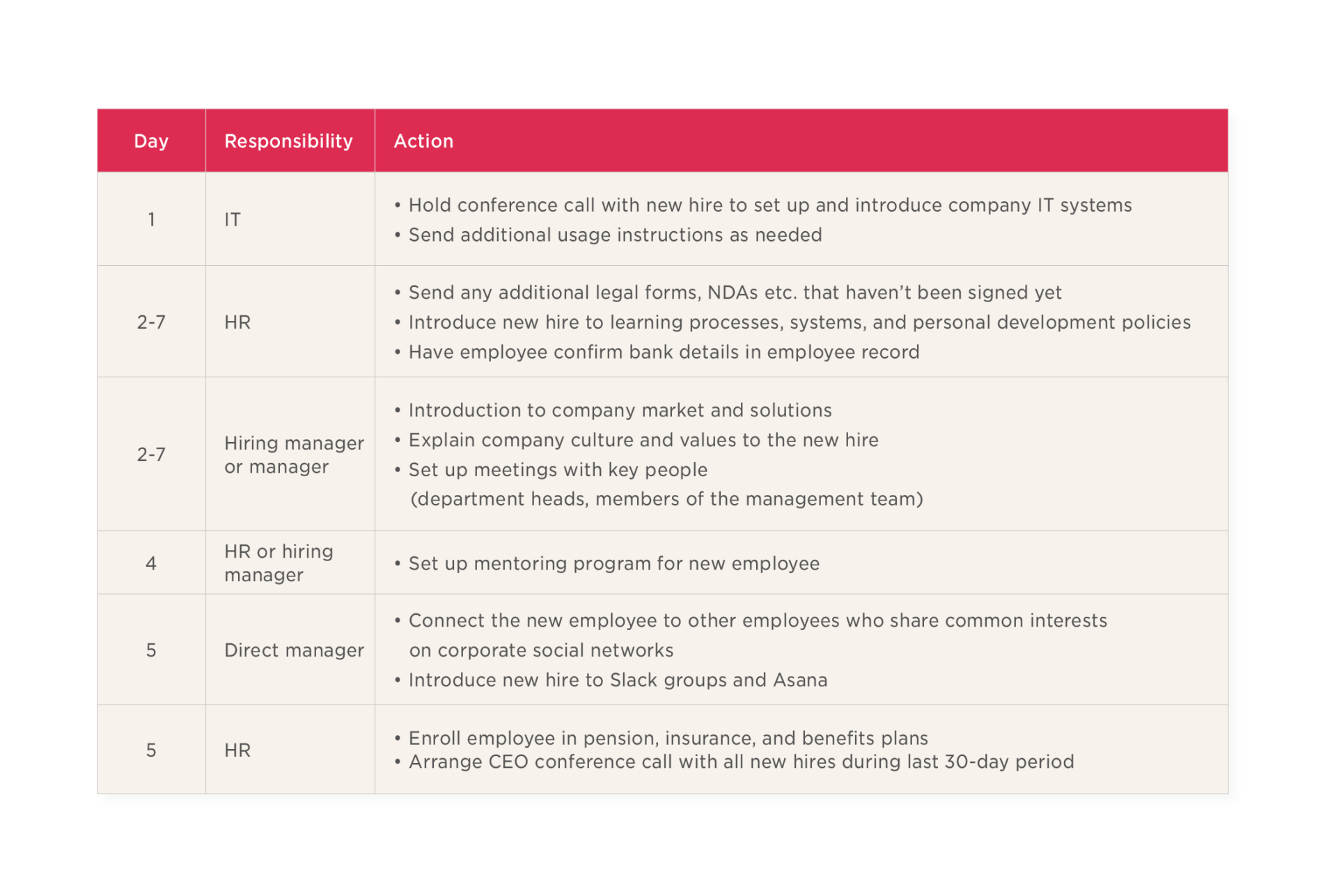
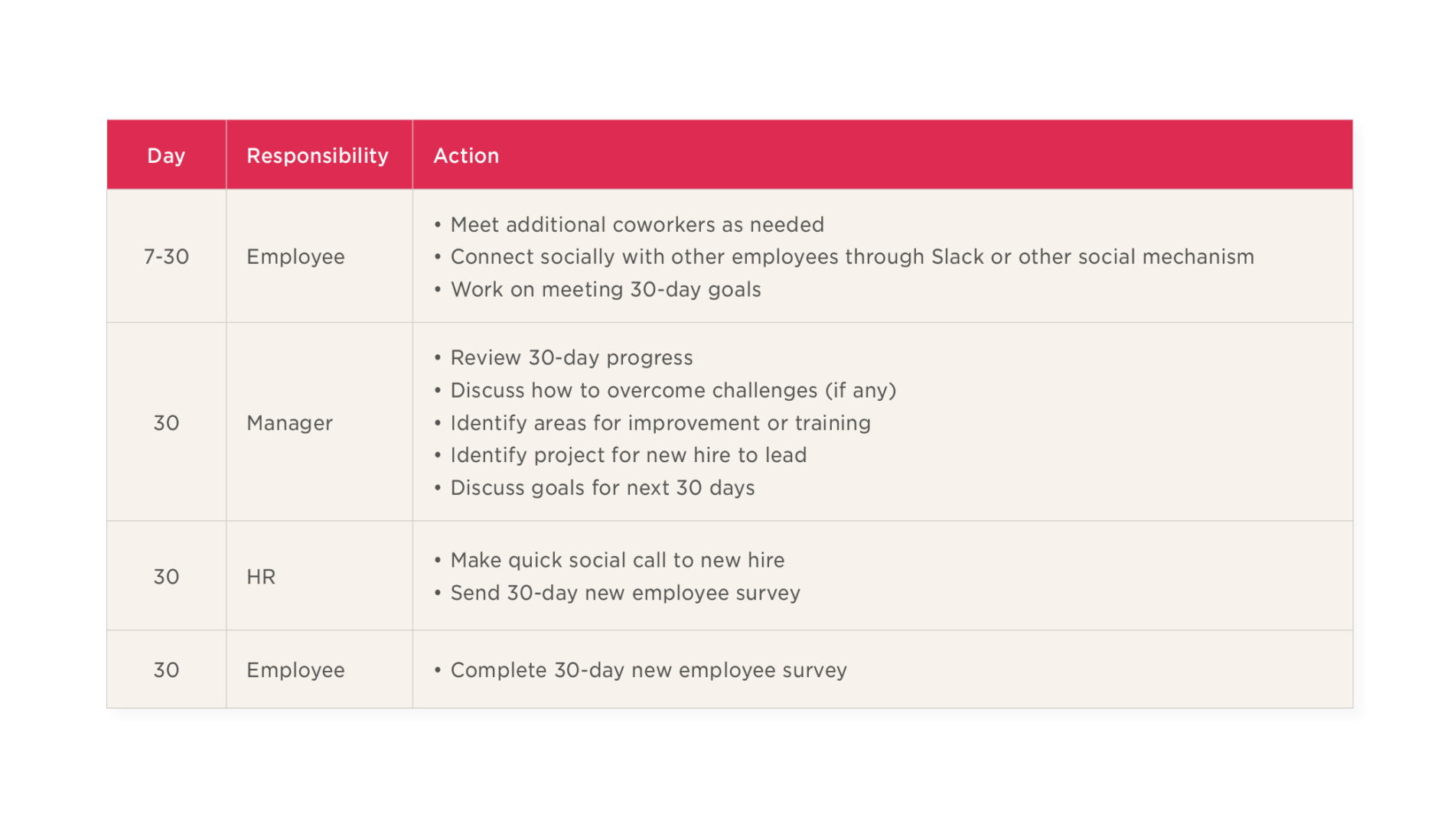
Days 31-60
This period is designed to further acclimate the team member to the work processes of the company, increase their social connections, and help them become successful.
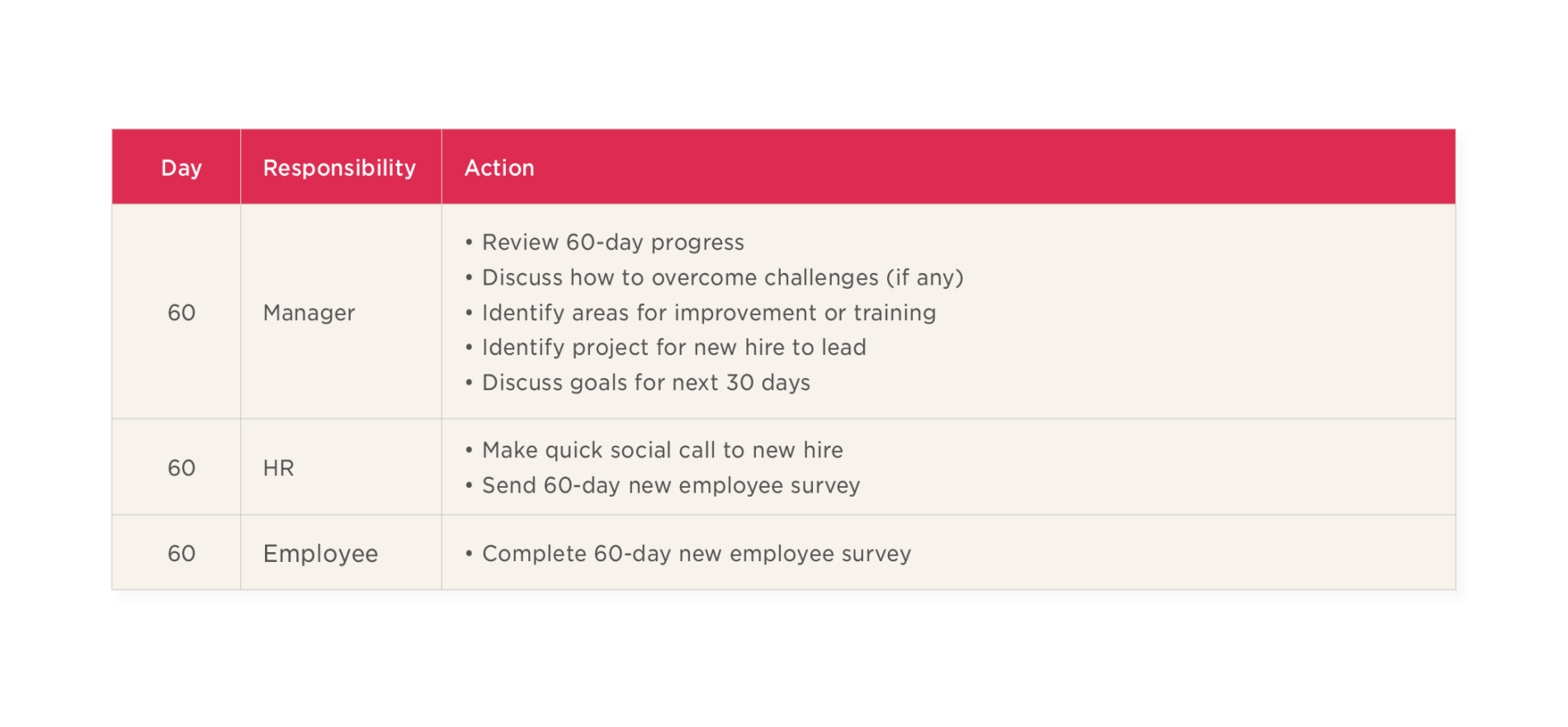
Days 61-90
This period is designed to keep the professional excited as they achieve greater independence and increase their productivity. They should be building social connections and finding their place within your organization and its culture.
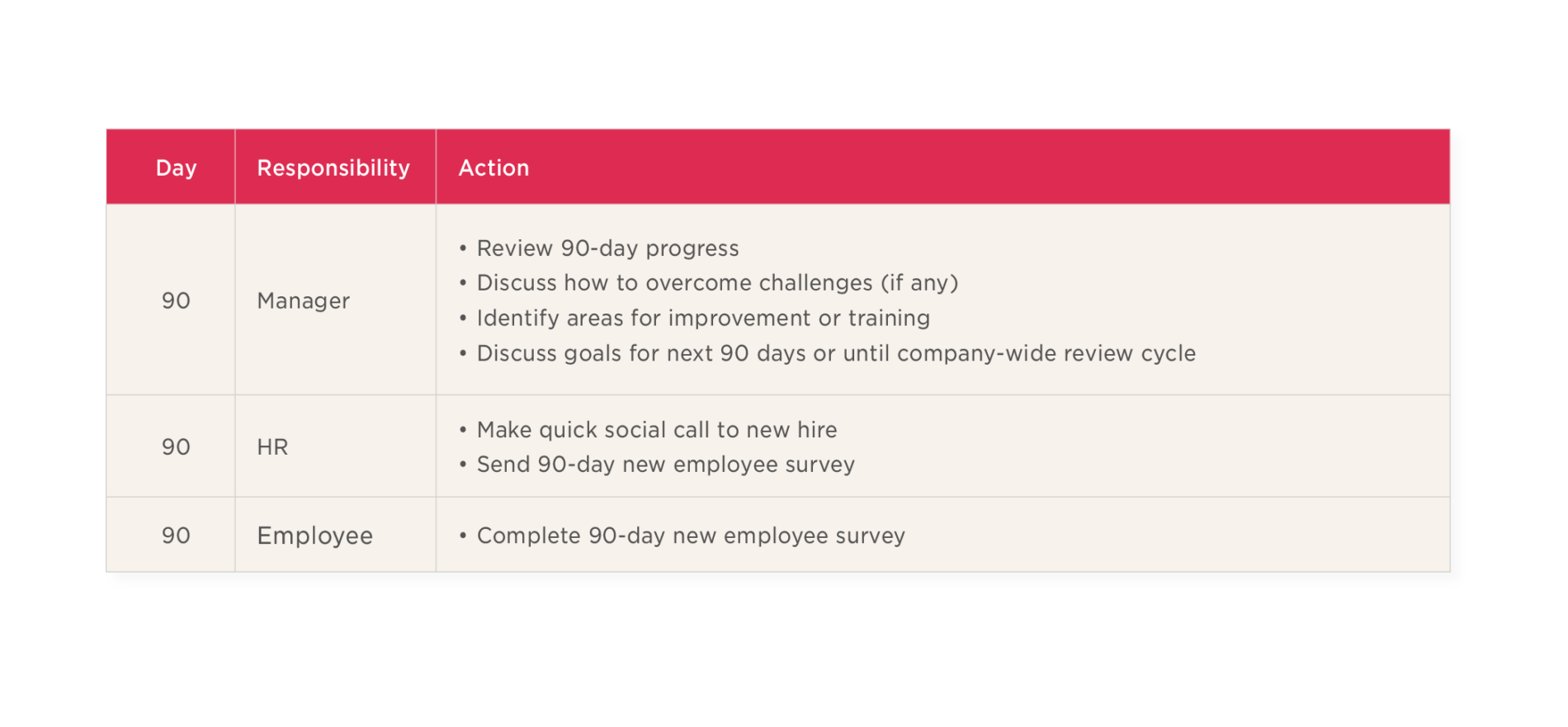
Kick off your remote onboarding process with Bob
Bob includes a number of tools and workflows that will help you smoothly onboard your people, both remote and in-house.
Onboarding workflows that streamline your process
- Set up remote onboarding flows to easily request and collect the right information.
- Automate the details of the onboarding process so you can set it and forget it.
- Personalize onboarding for remote and in-house talent with just a few clicks.
- Create a consistent, high-quality remote onboarding experience.
- Ensure excellence by never forgetting the little things.
Jump-start engagement during preboarding
- Excite your talent before they get started by giving them a feel for your company and culture.
- Help them get paperwork tasks out of the way, to clear space for an engaging and exciting first day.
- Showcase your company culture and share custom images or videos.
- Personalize preboarding and onboarding communications with fonts, formatting, and autofill fields.
Reduce first-day bureaucracy
Let new joiners complete their details online and upload copies of documents during preboarding so they can spend more of their first day getting to know their teammates and their new company.
- Distribute key handbooks and policies for perusal and reading in advance.
- Collect only the details you need—no more and no less.
- Finish most new-hire processes before day one (hooray!).
Build social connections that last
Introduce new hires to your company, culture, and team before they join to set them up for success. Let them discover coworkers who share interests and hobbies with the option to connect with them socially.
- Reduce first-day jitters.
- Kick-start working relationships with a clear People Directory and Org Chart.
- Build social relationships without the water cooler or company cafeteria.
Set tasks and encourage rest
Walking is a proven way to improve mental health but leaving the workplace during the day is a tough ask for some. Remove the guilt and anxiety around people leaving the office for 30 minutes by sharing local walking routes and asking your senior team to champion walking meetings. Make these breaks as normal and essential as a morning coffee.
- Help new starters get quickly oriented with Bob’s automation for new-hire tasks.
- Set up customized workflows broken down by tasks.
- Empower people to collaborate easily.
Set goals and get it done
Drive productivity by putting meaning behind what your people do with vision and company alignment.
- Establish easy-to-track KPIs.
- Spot top talent in your organization, filtered by individual or team.
- Assign objectives and get things moving.
Recommended For Further Reading
Engage with surveys and shoutouts
Use surveys to periodically get feedback from new joiners to ensure their success, and publish shout-outs to make people feel truly welcome.
- Enable anonymous feedback.
- Have your finger on the pulse of new team members and check in on them.
- Personalize surveys with a form editor.
- Integrate shout-outs to celebrate your organization’s growth.
Remote onboarding doesn’t need to feel remote
In today’s rapidly changing employment landscape, HR leaders need to build a company culture that lasts.
Effectively onboarding remote or hybrid workers fosters camaraderie and commitment, builds loyalty, and forges stronger, more productive teams.
We built Bob so you can put your people first. With integrated onboarding and preboarding workflows, social connectivity, goal and task setting, and all the insights you need. Helping you lay the foundations for a culture that keeps your top talent firing on all cylinders.
